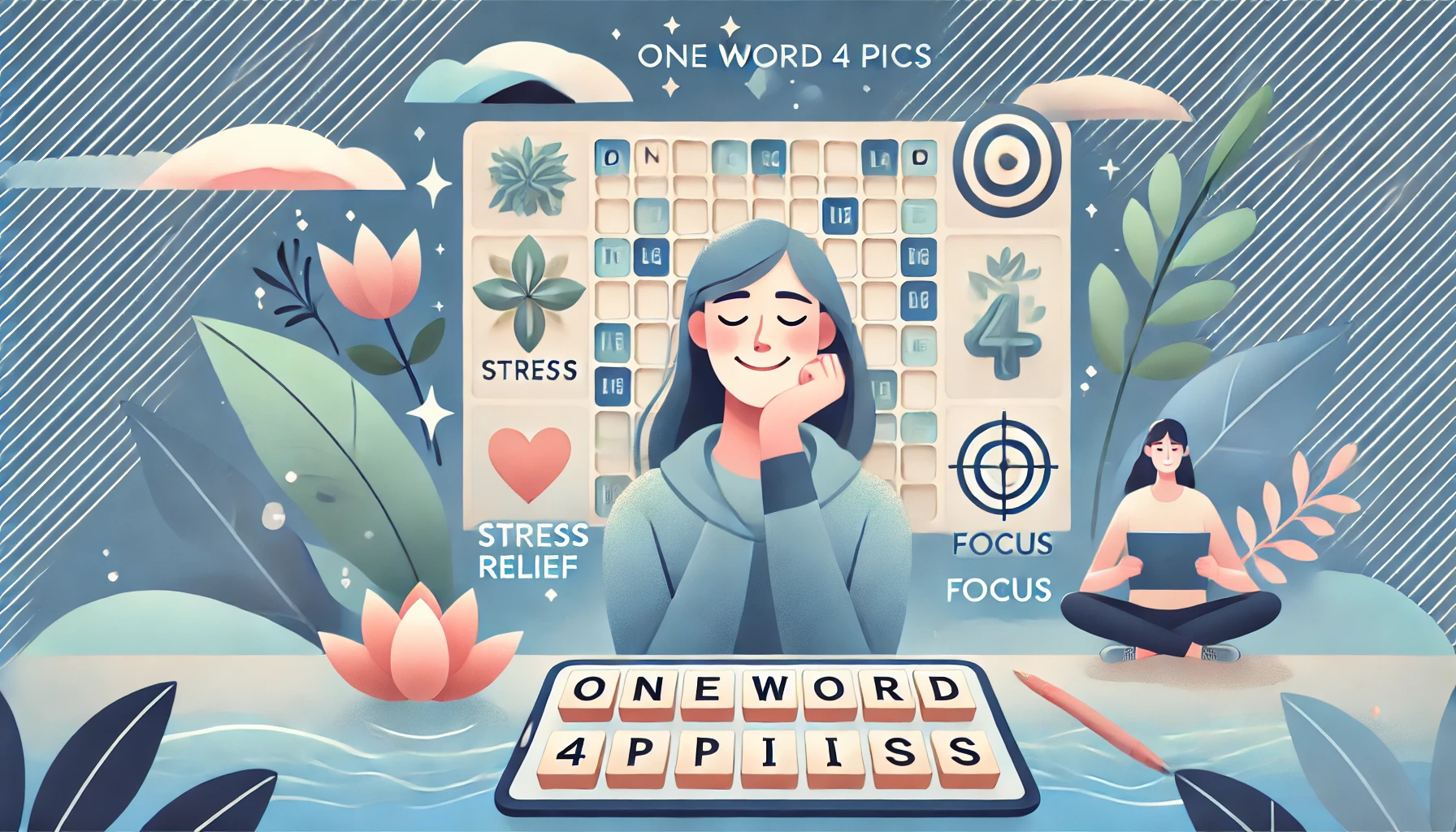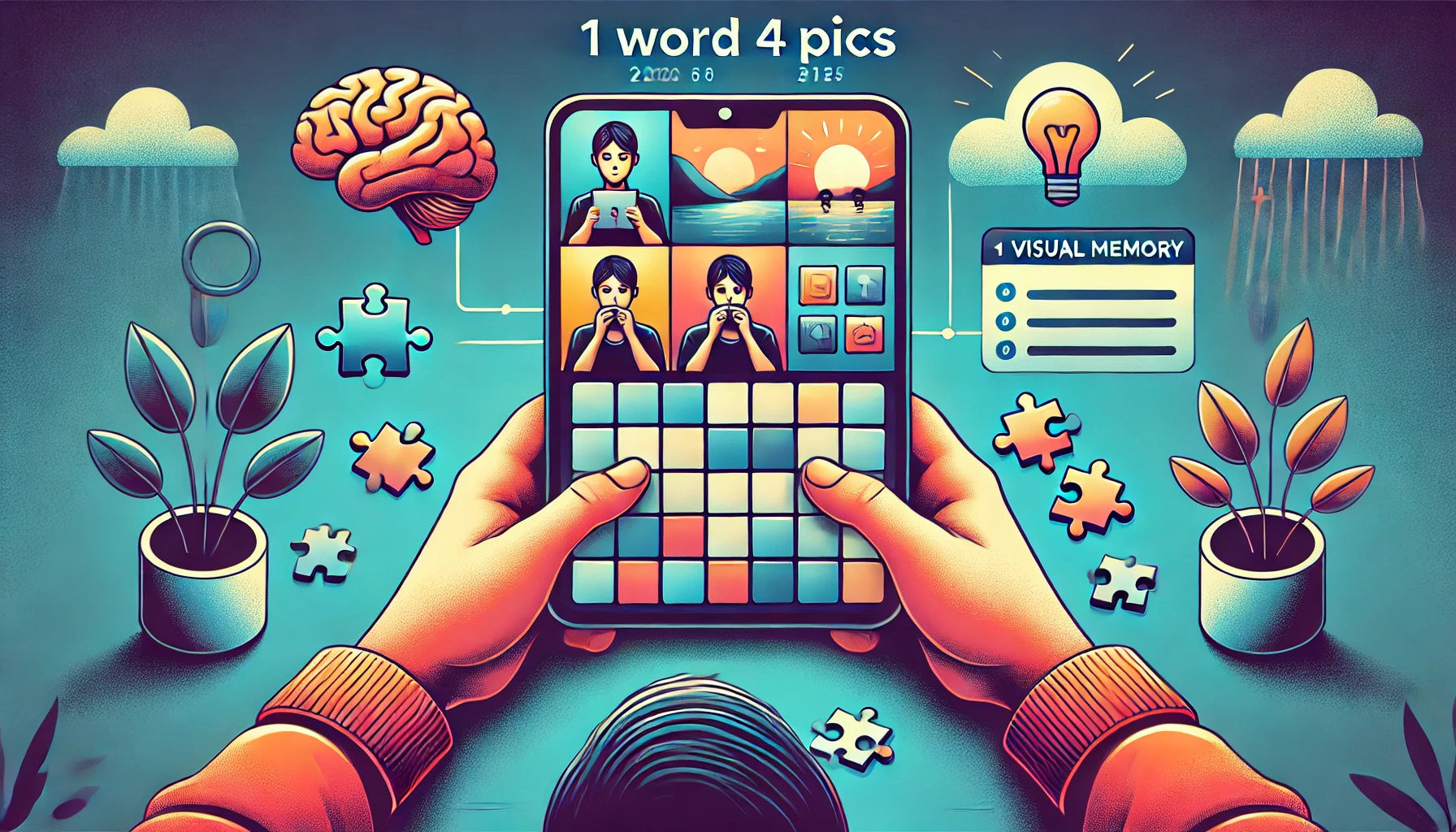Now Reading: One Word Four Pics” for Language Learners: How It Helps Expand Vocabulary
- 01
One Word Four Pics” for Language Learners: How It Helps Expand Vocabulary
One Word Four Pics” for Language Learners: How It Helps Expand Vocabulary

Studying a new language is often associated with significant challenges. Though it may be impressive at first sight, with the help of adequate tools, the very process becomes much more engaging and reflective. One of these tools became popular, namely One Word Four Pics. It is an interactive and entertaining game in which learners attempt to guess a single word that links four images presented simultaneously. The game is not just fun; it also enables learners to improve their vocabulary, develop a knack for associating words, and cultivate a flair for deciphering word meanings by visualizing the context.
This article will focus on examining the benefits and practical applications of the One Word Four Pics game for language learners, while also highlighting the positive uses of the game as part of vocabulary building in language learning.
How “One Word Four Pics” Works?
The game One Word Four Pics has four pictures that do not appear to be related at first sight. The problem is to find a word that will connect these pictures. When you have pictures of an apple, a banana, a cherry, and a grape, the term we may guess is the word ‘fruit’. Associations and recognition patterns among images foster an understanding of the words and their meanings, thereby strengthening learners’ knowledge.
It can be applied to both novice and advanced learners. It not only exercises word knowledge but also activates thinking. It is a great approach to learn a new language since it involves pictures, and thus, remembering words may become an easier task.
Benefits of “One Word Four Pics” for Language Learners
1. Enhances Vocabulary Retention
Among the key advantages of using the game of 4 Pics 1 Word is the improvement of vocabulary retention. Studies indicate that when new words are presented in the form of visual representations, they linger longer in our minds. When images are correlated with words, learners will engage multiple sensory channels, which enhances recall and comprehension of new vocabulary.
Example: The connection created between the word ‘dog’ and the visual image of a dog roots the learner’s memory when they see a picture of a puppy, an adult dog, a dog bowl, or a dog leash and guess the word ‘dog’. This learning experience is effective and yet stimulating.
2. Teaches Word Associations
The game stimulates learners to guess word associations through matching different images with them. This helps to enhance better comprehension and the capability to construct words in various situations. In a given case scenario, the learner may begin to associate the term with a picture after playing several rounds of the game, and images of flowers, tools, fences, and plants come to mind when the name of such a garden is mentioned.
3. Builds Critical Thinking Skills
To solve the puzzle, the learners will have to think critically and logically. They need to examine the images and determine the unifying theme that occurs between all the photos. This not only helps build vocabulary but also enhances problem-solving skills, which are essential in language learning.
4. Makes Learning Fun and Engaging
Gaming-style learning is far more engaging and active than traditional learning methods. It makes vocabulary practice an interactive and fun experience. Learners enjoy it much more when they are having fun, and it is easy to stay motivated to practice regularly, which results in consistent growth.
5. Suitable for All Ages
The 4 Pics 1 Word game is suitable for learners of all ages and can be accommodated. Regardlessaccommodated. Regardless of your age, whether you are a young child or an adult, you can adjust the game to suit your language knowledge level. This is why it can be a valuable tool for learning speech, suitable for both novices and more experienced individuals.
Practical Ways to Use “One Word Four Pics” for Language Learning
Now that we’ve discussed the benefits of this game, let’s look at how you can use “1 Word 4 Pics” in practical language learning scenarios.
1. Learning New Words
One of the simplest ways to incorporate this game into language learning is by using it to discover new words. Each round of the game presents a new challenge, pushing learners to guess the correct word based on visual clues.
- Beginner Level: Start with simpler words, like animals, fruits, or common household objects.
- Intermediate Level: Move on to more complex topics such as professions, hobbies, and emotions.
- Advanced Level: Tackle abstract concepts, such as philosophy or technology.
2. Expanding Word Usage
Through their advancement, learners gain insight into word usage through the use of 1 Word 4 Pics. For example, the term “light” can be associated with images of a light bulb, the sun, a traffic light, and a flashlight. Arguably, learners can write sentences using the word to observe its dictionary meanings.
3. Contextual Learning
The game promotes context learning, where the pictures are related to words. This helps learners apply words in real-life situations. The learners are not expected to memorize words in isolation; rather, they get to have a preview of how words are supposed to apply to different contexts, which enhances their fluency.
“One Word Four Pics” and Visual Learning
Visual Learning Power
Human beings are visual beings. Researchers have found that we remember approximately 80 percent of what we see, compared to 20 percent of what we read. That is why 1 Word 4 Pics can be an effective game for language learners. The game leverages the fact that visual material is easier to process in the brain; therefore, vocabulary is presented alongside photos.
Building Visual Vocabulary:
Hearing words and linking them with images helps children understand meanings more effectively. An example would be when you look at a display photo of a cat, and it is written ‘meow.’ You will immediately relate the word or sound that a cat makes. The pictorials enhance the definition of the word, resulting in accelerated memorization and comprehension.

How “One Word Four Pics” Improves Communication Skills?
Acquisition of a language does not only involve memorisation of words but also speaking it. The 1 Word 4 Pics game will assist the learners to advance their communication skills by doing the following:
1. Promotes Describing Words
To describe a picture, students are often required to do so in words. This is useful because it helps them create sentences and apply new vocabulary. In other words, they may need to convey an image of a park, which could be depicted as having a tree, a bench, and people walking.
2. Minimizes Misuse of Words, Reduces Faulty Usage of Words
This game is used to strengthen the connection between words and pictures, reinforcing the correct use of these words. This implies that learners do not simply learn a word by heart, but rather learn how to apply it in practice, which enhances their performance in both speaking and writing.
Creating Your Own “1 Word 4 Pics” Challenge
An excellent method of enhancing what you learn is to design your very own 1 Word 4 Pics games. This is the way you can do it:
- Select a word: Select a word that you would like to learn or practice.
- Search 4 Similar Pictures: Search the pictures made with the word. The pictures ought to comply with various facets or applications of the word.
- Test Your Brains: See whether you can find a word to relate to the pictures. In case you play together, ask other players to play this way as well.
It is a method that would enable learners to be active consumers of the vocabulary rather than passive receivers. It stimulates thinking and imagination.
Is “1 Word 4 Pics” Suitable for All Language Learners?
Absolutely! Although the game appears helpful only at the beginning of learning, it can also be beneficial for someone who already has extensive knowledge. The game is complex to change according to the level. Simple nouns and common verbs can be the starting point for a beginner learner, whereas abstract concepts, idioms, and phrasal verbs can be a challenge during advanced learning.
Furthermore, the game is suitable for a learner who might struggle to memorize using traditional approaches. On the one hand, the game offers a different, much more interactive option of learning and memorizing new vocabulary to visual learners.
Conclusion
The use of 1 Word 4 Pics can be an efficient, entertaining, and motivating way to learn a language by adding a huge amount of words to your vocabulary.
This game can be a useful addition to your language-learning toolkit, whether you are a beginner or you already have some knowledge, but you want to improve it. It increases vocabulary retention, enhances mental associations with words, and trains individuals to think critically, among other benefits, all while making the learning experience more engaging.
Therefore, whenever you feel stagnated throughout language learning, give a shot to 1 Word 4 Pics and see your vocabulary soaring through the roof.
What can we gain by using the 1 Word 4 Pics?
It assists by relating words to visual pictures, making it easy to recall and interpret their meanings.
Is it possible to play 1 Word 4 Pics as a beginner?
Yes! The game is adaptable to various levels, allowing beginners to start with simple words such as animals, fruits, or domestic items.
Can the use of 1 word for four pics be limited to personal studies?
No, it can also be played with a group, and this is a wonderful cooperative learning task.
Does 1 Word 4 Pics operate with all languages?
Absolutely! This game can teach you any language, as you can edit the vocabulary and images to practice it.










